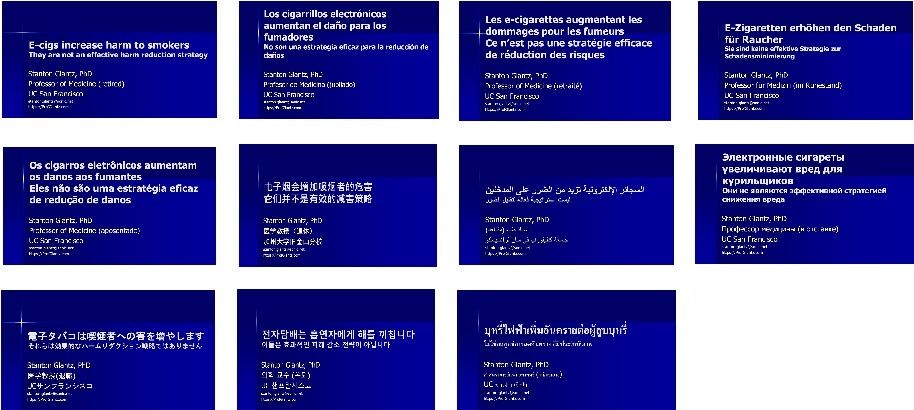Glantz retired from the University of California San Francisco faculty in 2020 after 45 years on the faculty and founding the UCSF Center for Tobacco Control Research and Education. Learn more at https://profglantz.com/about. .. more
Glantz retired from the University of California San Francisco faculty in 2020 after 45 years on the faculty and founding the UCSF Center for Tobacco Control Research and Education. Learn more at https://profglantz.com/about.
Stanton Arnold Glantz is an American professor, author, and tobacco control activist. Glantz is a faculty member at the University of California, San Francisco (UCSF) School of Medicine, where he is a Professor of Medicine (retired) in the Division of Cardiology, the American Legacy Foundation Distinguished Professor of Tobacco Control, and former director of the Center for Tobacco Control Research and Education. Glantz's research focused on the health effects of tobacco smoking. .. more

This blog focuses on tobacco and cannabis and public health, so I have refrained from commenting on broader public health issues. But, I am making an exception to disseminate the National Academy of…

California has enacted the first law, AB455, that requires sellers of single-family homes to disclose in writing any known indoor smoking, vaping, or thirdhand smoke contamination to prospective buyers. It also also directs the…

In the 1990s, good vs. evil was clear. Back then, I focused on HIV, TB, malaria, dengue & child health, and avoided tobacco control because its go-to interventions were stigma, coercion and harm exaggerations.
Reposted by Stanton A. Glantz
In the 1990s, good vs. evil was clear. Back then, I focused on HIV, TB, malaria, dengue & child health, and avoided tobacco control because its go-to interventions were stigma, coercion and harm exaggerations.

At least you now admit that you are promoting an assumption.
Reposted by Stanton A. Glantz

You seem to WANT dual use to be the most common outcome. But you know it's:
(a) smokers on the journey to quit
(b) smokers who sometimes vape
(c) vapers who sometimes still have a cig
But Americans who smoke are 20 times more likely to TRY to quit with a nicotine vape than with Varenicline.
link.springer.com/article/10.1...


Last year we published "Population-Based Disease Odds for E-Cigarettes and Dual Use versus Cigarettes" that showed that some disease risks of e-cigarettes are indistinguishable from cigarettes and for others they on only…
Reposted by Stanton A. Glantz

But Americans who smoke are 20 times more likely to TRY to quit with a nicotine vape than with Varenicline.
link.springer.com/article/10.1...
Reposted by Stanton A. Glantz
You seem to WANT dual use to be the most common outcome. But you know it's:
(a) smokers on the journey to quit
(b) smokers who sometimes vape
(c) vapers who sometimes still have a cig
"Effective" = "efficacy" + USE
Efficacy: www.cochranelibrary.com/cdsr/doi/10....
Use: link.springer.com/article/10.1...


Reposted by Stanton A. Glantz


"Effective" = "efficacy" + USE
Efficacy: www.cochranelibrary.com/cdsr/doi/10....
Use: link.springer.com/article/10.1...

Reposted by Stanton A. Glantz, Mike Daube

Reposted by Stanton A. Glantz, Virginia Sapiro

My blog post "E-cigarettes increase harm to smokers, so should not be promoted as a harm reduction strategy (in 10 slides)" has attracted a lot of…
Reposted by Stanton A. Glantz

The new paper "How e-cigarettes compromise children’s human rights" by Tom Gatehouse and colleagues provides more evidence to inform e-cigarette policy making by reminding the delegates to the FCTC Conference of the Parties next week that they…

In the face of a major push by the tobacco companies and their allies to trick Parties to the WHO Framework Convention on Tobacco Control (FCTC) to integrate the industry's "harm reduction" marketing message into FCTC guidelines, the WHO has…
Reposted by Stanton A. Glantz

Explore the Global Index: https://globaltobaccoindex.org/


